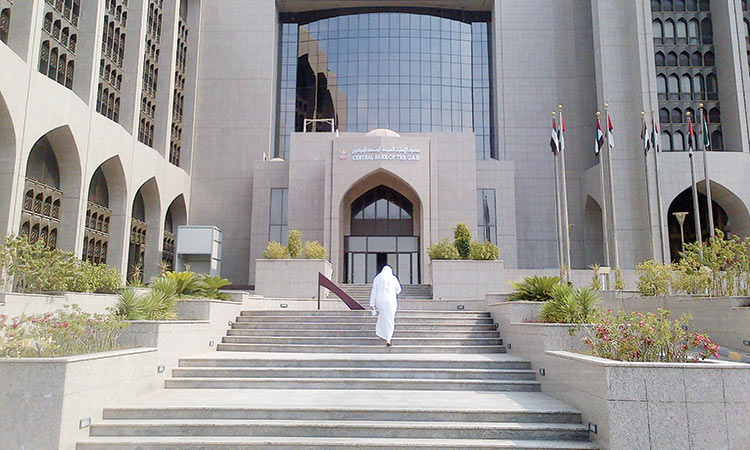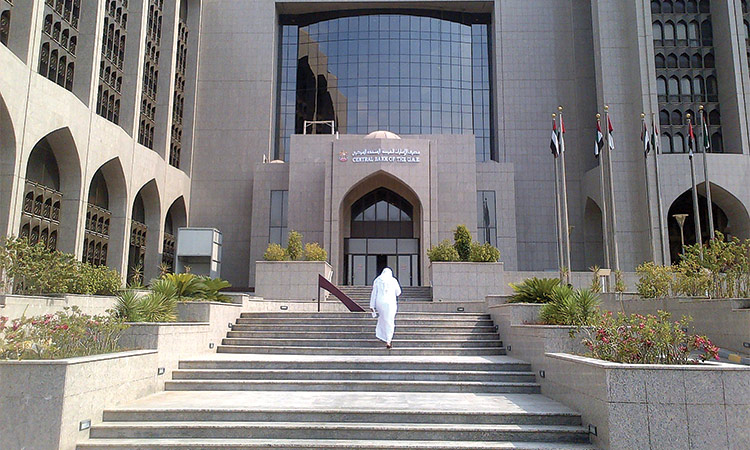CBUAE’s foreign assets increase Dhs203b

The photo has been used for illustrative purposes.
The statistics released on Monday indicate that the foreign assets of the Central Bank increased by 2 per cent on a monthly basis from Dhs695.04 billion in January 2024 to Dhs708 billion at the end of February 2024, representing an increase of Dhs13 billion.
The foreign assets of the Central Bank increased annually by 40.2 per cent, compared to Dhs505.1 billion in February 2023, with an increase of approximately Dhs202.9 billion over 12 months. Moreover, they increased by about 4 per cent or Dhs27 billion since the beginning of the current year, compared to approximately Dhs681.15 billion at the end of 2023.
The Central Bank’s statistics attributed the increase in foreign asset volume to the rise in current account balances & deposits with banks abroad, with an annual increase of 51 per cent to Dhs467.56 billion at the end of last February, compared to around Dhs309.9 billion in February 2023.
Foreign investments within the Central Bank’s foreign assets amounted to approximately Dhs189.37 billion at the end of last February, marking a year-on-year increase of about 28.9 per cent from Dhs146.9 billion in February 2023, representing an increase equivalent to Dhs42.5 billion.
The Central Bank’s statistics further indicated that other foreign assets reached Dhs51.12 billion at the end of last February, growing by approximately 5.8 per cent annually compared to about Dhs48.31 billion in February 2023, with an increase equivalent to Dhs2.8 billion.
The Central Bank noted that its foreign assets excludes CBUAE’s Reserve Tranche Position (RTP) & SDR Holdings with the IMF.
Separately, the Central Bank of the United Arab Emirates saw its balance sheet soar to touch Dhs734.61 billion at the end of January 2024, marking a significant surge in its financial strength. This impressive growth is revealed in the bank’s latest balance sheet report.
The report highlights a robust increase in the CBUAE’s balance sheet, reaching a total of Dhs734.61 billion by January 2024. Compared to Dhs559.88 billion in January 2023, this translates to a substantial growth of Dhs174.73 billion.
The Central Bank’s balance sheet increased on a monthly basis to about Dhs720.94 billion in December 2023. According to the statistics, the Central Bank’s balance sheet was distributed on the asset side as follows: Dhs331.41 billion for cash and bank balances in January 2024, in addition to investments of about Dhs213.17 billion, Dhs161.51 billion for deposits, Dhs1.93 billion for loans and advances, and Dhs26.59 billion for other assets.
Islamic finance sector: S&P Global Ratings, the global credit rating agency, confirmed that the total assets of the global Islamic finance sector continue on a path of rapid growth, pointing to the sector’s accelerated growth in the UAE last year due to the strong performance of the non-oil economy.
The agency added, in a recent report titled “Islamic Finance 2024-2025: Resilient Growth Anticipated Despite Missed Opportunities”, that it expects high single-digit growth in the period 2024-2025 after the sector achieved 8 per cent growth in 2023.
According to the report, sukuk issuances are expected to range between $160-170 billion in 2024, boosting sector assets’ growth in 2024, while further growth is likely to be witnessed in the Islamic investment funds and Takaful sectors.
The agency explained in its report that the sukuk market started strong in 2024, with total issuances reaching $46.8 billion by 31st March, 2024, compared to $38.2 billion in the same period of the previous year. Islamic banking assets contributed 56 per cent to Islamic finance sector growth in 2023, compared to 72 per cent in 2022, indicating that financial institutions in all Gulf countries accounted for 86 per cent of asset growth in 2023, with Saudi Arabia being the main contributor, achieving 56.7 per cent of the growth. It also expected Saudi Vision 2030 and the growth in corporate lending and mortgage financing to continue supporting the Islamic finance sector over the next 12-24 months.
Additionally, the report noted that “the UAE’s contribution was strongest in 2023 due to the strong performance of the non-oil sector, and in other countries, we observed some growth, especially in Turkiye and Indonesia, while performance declined somewhat in Malaysia and Türkiye due to the depreciation of the ringgit and the Turkish lira”.
The agency expected the Islamic banking sector in the Asia-Pacific region to achieve significant growth, driven by high single-digit demand for Islamic products and services and untapped market potential in Indonesia, Bangladesh, and Pakistan over the next two years.






